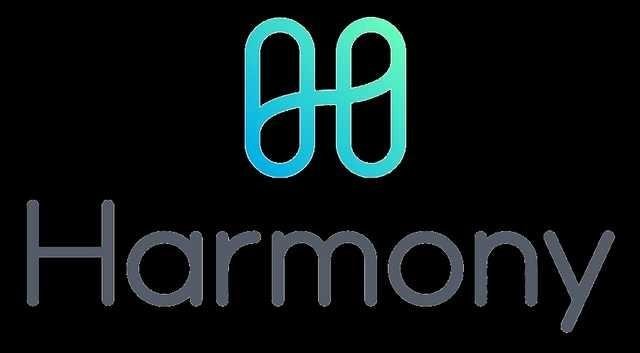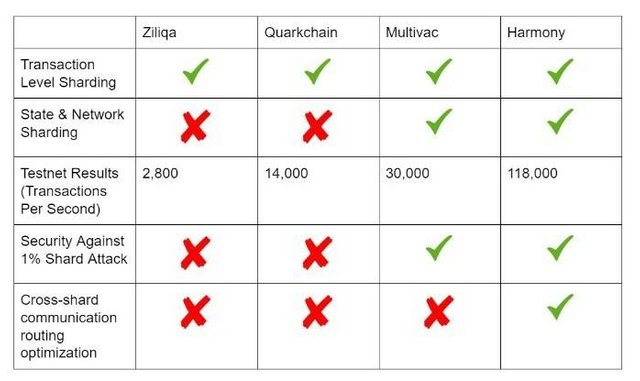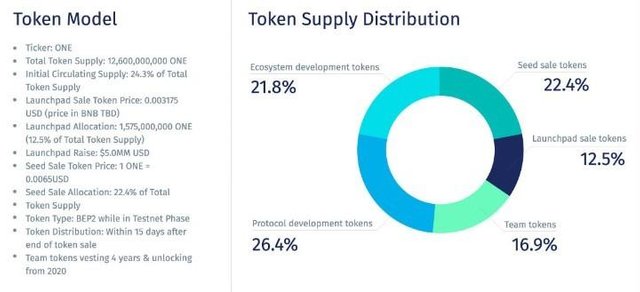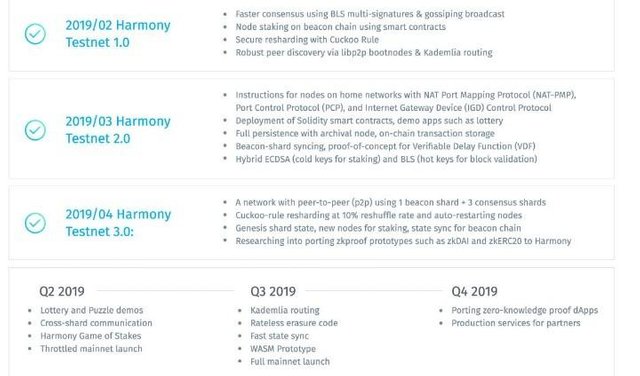
INTRODUCTION

The internet, as we have all witnessed, has been through various phases since its invention. Its journey to finally attain global adoption, when analysed from a technical perspective can be likened to a roller-coaster ride. That is to say, just like every other piece of technology ever invented, it has experienced countless turbulent turns which in various ways has threatened its development. With that being said, it is wise to imply that this requisite tool in recent years has risen to become a driving force behind the development of major sectors in our world today.
To every internet-savvy persons, it is pretty clear that the whole concept of the internet revolves around solving the problem of the masses, and achieving this sole objective could only be made possible through the constant introduction of top-notch technologies which have been specifically engineered for various problem-solving purposes.


Image Source

Blockchain, is one good example of a state-of the-art technology which clearly fits this profile. Since its introduction in 2008 by Satoshi Nakamoto, this top-notch technology has literally been leveraged in major sectors of our world today. This technology was introduced to initially act as a means through which Bitcoin (The first Cryptocurrency) transactions could be facilitated. The introduction of Bitcoin led to the total disruption of our world’s financial system. Satoshi’s intention to create a vast ecosystem which will enable people around the world transfer value easily in a more decentralized manner, and without the interference of any third-party (financial institutions) was a huge success but it however, wasn’t devoid of several bottlenecks.


The rest of this publication critically analyses Harmony; a modern project, poised at providing all-round solution to the challenges most blockchain-based project have failed to address. A special segment of this publication gives in-depth review on how Harmony will bring total revolution to the cryptosphere, with a use case to give clear insight of the project’s plan for the general public

Introducing Harmony: The Next Generation Sharding-based Blockchain



What is Harmony?
Harmony is a modern sharding-based blockchain project poised at providing all-round solution to the setbacks currently faced in the blockchain industry.
By leveraging the Proof-of-Stake (PoS) blockchain concensus, Harmony is able to provide a decentralised ecosystem which doesn't only address the long existing problems of Scalability and Efficiency, but optimises a fully-functional sharding-based technology which has been engineered to provide users with a seamless experience.
The Ultra-Modern Sharding Technology and How it is being Leveraged by Harmony

The concept of Sharding has been in existence for many years now. It is a database partitioning technique which has been effectively leveraged in recent years to generally improve the scalability of vast data networks by distributing data workload amongst each partitioned servers.
Under the span of a decade, this modern technique has been leveraged in countless database systems, and it has proven to be really efficient.
Top-notch data firms like Oracle, IBM and CUBRID have leveraged the efficiency of the sharding technique in recent years to help improve the efficiency and scalability of their network. Hence, proving how viable this piece of technology has been to the modern data industry.
The Sharding technology was taken to a whole new level when it was introduced into the blockchain industry. It gained major recognition in 2017 when Ziqilla achieved a throughput of 2,800 Transaction per Speed with the help of the Proof-of Work (PoW) Consensus.
Harmony however, is taking this modern technology to a whole new level. By working with a fully decentralised PoS-based sharding scheme, it is able to provide unmatched scalability and security.


Harmony VS Other Competitors

The multiple layer sharding technique adopted by Harmony, is one that has never been utilised in the blockchain-sphere. Working with multiple shard chains, Harmony automatically creates an ecosystem where multiple transactions can be facilitated in milliseconds. This way, every shard chains on the block serves their various purposes, but communicates with each other through cross-shard communication.
The Beacon Chain is also a vital member of the Sharding process. This unique chain is in charge of random number generation which helps keep the system secured, and also accept stakes sent in by users.
What Makes Harmony Stand Out?

What Harmony has in store for the Blockchain industry is no joke. This revolutionary project is obviously going to bring about the much deserved change this industry has been lacking since its inception.
Below is an overview of special features and benefits that makes Harmony different from others.
Unmatched Scalability:
The scalability Harmony provides, is unlike anything we have ever experienced before in the cryptosphere. By leveraging the multi-layer sharding technique which involves a large number of efficient shard chains processing multiple transactions, a mind-boggling record of over 118,000 Transactions per Second has been attained in its first Testnet program.
From my analysis, this is over 16,000 times better than the Bitcoin blockchain. With Harmony, the problem of Scalability is a thing of the past.
Top-notch Security
The importance of security in a really vast network cannot be overemphasised. Harmony has succeeded in building a fully decentralised network consisting of multi-layers through the Sharding consensus algorithm, making the network impenetrable for hackers. The sharding process was specially engineered to totally generate codes at intervals through the Distributed Random Generation (DRG) process.
Efficient Consensus Mechanism
Harmony leverages the Proof-of-Stakes (PoS) consensus to maintain a highly efficient eco-system. Before now, the Proof-of-Work (PoW) consensus mechanism was used on the blockchain. The PoW consensus follows an archaic pattern where miners get to play a cryptographic puzzle and the winner gets the right to earn major rewards and propose the next block. The Proof-of-Stakes (PoS) consensus follows a completely different pattern which provides efficiency to the system.
How Important is Harmony to Other Projects?

The Harmony framework was designed specially to suit major projects with great need for a scalable and efficient eco-system.
Harmony was built to cater for the needs of the masses, so no one is left out. Harmony has built a vast network capable of catering for the needs of Corporate organisations, Decentralised exchange platforms, Gaming companies, and a whole lot of other industries integral to our world's development.
Harmony will enable applications which were not previously feasible on blockchain, including high-volume decentralized exchanges, interactive fair games, Visa-scale payment systems, and Internet-of-Things transactions. Harmony strives to scale trust for billions of people and create a radically fair economy.
The ONE Token

ONE is the official token which has been engineered to power the Harmony blockchain.
With this unique token, transactions can be easily facilitated across the Harmony network at the tap of your finger.



For more information about the ONE token, visit Harmony Onepager
Roadmap



Use Case


Image Source

Fred Meyers owns an online gaming company which provides gaming services to a large part of Europe. Two years into the gaming business, Fred's gaming company became well known across Europe and he was hoping to expand his gaming venture in order to reach the whole of Europe and its outskirts.
Fred had a very big ambition, but failed to map out a feasible plan to suit it. Two weeks after the big upgrade, his major servers crashed due to heavy workload, and large part of Europe couldn't enjoy his gaming services. Query messages were streaming in from frustrated users and in no time Fred's business was hanging on the balance because angry investors were threatening to withdraw their sponsorship deals.
Fred became puzzled and sought for a better way to handle his Server issue. He found out about Harmony and decided to give it a try. With the amazing blockchain feature Harmony provides, Fred's gaming company didn't need to worry about over-worked servers. Users began to enjoy amazing experiences as they could now earn rewards in ONE token as they progressed. Fred business grew exponentially, now he is a happy CEO with bigger aspirations for the future. All thanks to Harmony!
Summary

We live in a world full of stiff competition, in an era where the dominant entity always thrive. This basic rule of life is evident in literally every sectors in our world today.
Harmony is here not just to dominate the Blockchain industry, but to provide the much needed innovation that has been lacking for over a decade.
For More Information and Resources:
Harmony Official Website
Harmony Onepager
Harmony Whitepaper
Harmony LinkedIn
Harmony Twitter
Harmony Instagram
All unsourced images were culled from project's official website
Hey Garlam - Head of Marketing at Harmony here - really love the article and was wondering if you'd be open to more work as one of our writers!
Message me on telegram - @garlamw (and yes it is the real me - check my twitter to verify my telegram id - https://twitter.com/GarlamWon)
Downvoting a post can decrease pending rewards and make it less visible. Common reasons:
Submit